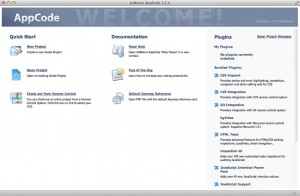

They are solution based and will need you to "add" anything and everything to your solution (this can be done by add>new item or add>existing item in VS). Your class MUST be in a namespace and you MUST reference that namespace for it to work. If you have this, chances are that you're not referencing If you create an App_Code folder and put something there, it will get compiled at runtime. Okay, there are two types of web projects.web applications and websites. Is that why my pages cannot access the class.cs? My question is: I created this folder outside of any Visual Studio/Visual Web Developer, I am just using a text editor to manually edit the XHTML and the odd ASPX code. However in my files (index.aspx) they are not picking up on the App_Code folder (or indeed the class files and methods inside. Like I say I am just mucking around, I created a folder named App_Code and placed a class.cs file inside of it. I do not want to repeat the same function on every page that needs to use it, so I heard about this App_Code folder. However I wrote a function/method to check if a file exists and if so Response.WriteFile that file. I am just mucking around with ASP.NET just now, creating XHTML pages with just the odd bit of ASP.NET (asp:label mainly). NET background (VB.NET and C#) but only as far as Application Development, I have about 2 days worth of ASP.NET experience and most of that was spent looking at errors. When you run AppCode for the first time, you can take several steps to complete the installation, customize your instance, and start working with the IDE.įor more information, see Run AppCode for the first time.įor information about the location of the default IDE directories with user-specific files, see Directories used by the IDE.First off, I do have a. Mount the image and drag the AppCode app to the Applications folder.
#APPCODE WINDOWS INSTALL#
For example, if you have a policy that requires specific install locations. Install AppCode manually to manage the location of every instance and all the configuration files. If you installed AppCode via the Toolbox App, you can find the installation directory in the app: open the settings of the IDE instance in the Toolbox App, expand Configuration and look for the Install location field. Log in to your JetBrains Account from the Toolbox App and it will automatically activate the available licenses for any IDE that you install. To install a specific version, click and select Available versions. Mount the image and drag the JetBrains Toolbox app to the Applications folder.Īfter you run the Toolbox App, click its icon in the main menu and select which product you want to install. There are separate disk images for Intel and Apple Silicon processors. Install the Toolbox Appĭownload the disk image. The Toolbox App maintains a list of all your projects to quickly open any project in the right IDE and version.
#APPCODE WINDOWS UPDATE#
Use it to install and manage different products or several versions of the same product, including Early Access Program (EAP) and Nightly releases, update and roll back when necessary, and easily remove any tool. The JetBrains Toolbox App is the recommended tool to install JetBrains products. You do not need to install Java to run AppCode because JetBrains Runtime is bundled with the IDE (based on JRE 11).
#APPCODE WINDOWS FREE#
SSD drive with at least 5 GB of free space AppCode supports multithreading for different operations and processes making it faster the more CPU cores it can use.


 0 kommentar(er)
0 kommentar(er)
